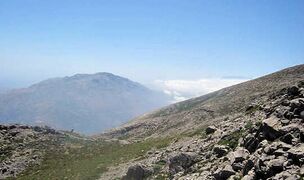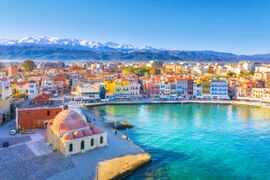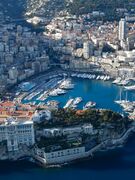Asteklion
Free City of Asteklion Ελεύθερη Πόλη του Αστακλείου | |
|---|---|
|
Flag | |
Motto: Διατήρηση και προστασία English: ("Preserve and Protect") | |
Anthem: Ύμνος στην Ευημερία | |
| Capital and largest city | Asteklion |
| Official languages | |
| Ethnic groups | |
| Demonym(s) | Asteklian, archaic Asteician |
| Government | Unitary dominant-party parliamentary republic |
| Baucis Siskos | |
| Zoe Kairi | |
| Legislature | Asteklian Parliament |
| Establishment | |
| c. 3000 BC | |
| c. 1160 BC | |
| 7 June 1823 | |
| 16 August 1955 | |
| Population | |
• Census | |
| GDP (nominal) | estimate |
• Total | |
• Per capita | |
| Currency | Drakhma (DRA) |
| Driving side | right |
| Internet TLD | .ak |
Asteklion, officially The Free City of Asteklion (Istroyan: Αστέκλιον), is a sovereign city-state in eastern Sarpedon. It borders xx and shares maritime borders with xx. The country's territory is composed of xx, reclamation efforts of land damaged by the Asteklian Collapse are being made by the government and currently contribute to 23% of the current area. The population is approximately 9.6 million and has one of the greatest population densities in the world, however, birth rates in recent years have entered a decline. Due to the multicultural population and wanting to respect cultural identities, it has four official languages; Istroyan, Latin, Aciriano and Ænglish. Considered to be a crucible of the Istroyan civilisation, Asteklion is renowned for being one of the most ancient cities in the world and is one of the warmest cities on Sarpedon; large factors of it's success with tourists.
Asteklion is a unitary parliamentary republic, and a developed country, with a high-income economy. While elections are considered relatively free, the government exercises a large amount of control over society and politics, and the Asteklion People's Party (APP) has ruled ever since the city's independence after the Collapse. Asteklion is also the founder of the Sarpedonic-Levantine Trade Cooperation (SLTC). Asteklion's culture heritage and significance place it within several international institutions such as xx.
Once a ritual site during the Aegoskopeion Era, Asteklion was originally settled a fishing town but later became an important polis established by Istroyans during c. 1160 BC. Asteklion later reigned over two other districts, of whom Arethusa I was the ruler, before the Istroyan decline. The people were described as culturally diverse and accepting but however had a contradictory martial history with surrounding poleis. Many battles have been recorded with their neighbours, most notably the Battle of Myndomenus, which was one of the bloodiest battles in Istroyan history.
After a century from recovering from the collapse and despite lacking access to natural resources, the nation steadily developed into becoming a staple of external trade to become a highly developed country and serves as a major shipping and financial hub. Though the economy pales in comparison to it's neighbours on Sarpedon, the GDP is increasing at a steady rate of 4% per year. Income inequality is on the rise because of government budgeting changes but is planned to be resolved within the next few years, according to President Siskos. Asteklion is placed in high regard among issues such as healthcare, crime and housing, with a home-ownership rate of 87 percent. Asteklians enjoy life expectancies above average in Sarpedon, fast internet speeds and some of the lowest levels of corruption in the world.
Etymology
The name originally derives from the Istroyan goddess of the stars, Asteia, a derivative from the Aegoskopeion pantheon of the goddess Astreya. The settlement name later changed to Astecleum during the latinisation of Istroyan civilisation after the decline, with the polis being used as an ancient port. Astecleum was once again Istroyanised and the name Asteklion remains intact throughout history to the present day.
History
Prehistory and early history
Earliest known evidence of the presence of human ancestors in Asteklian territory dates back to 3rd millennium BC, where archaeologists discovered ruins that may elude to a ritual site used for sacrifice by the ancient Aegoskopeion civilisation that predates the Istroyans by thousands of years and is theorised to have served as the socioeconomic foundation for the Istroyan civilisation. Asteklion has been continuously inhabited for at least 5,000 years. By 1300 BC, the site had become a prosperous fishing site and was soon settled by the Istroyans and developed into a polis centuries later, named Asteia.
Istroyan period and the decline
xx
Collapse period
xx
Modern period
xx
Geography
-
Area leading out of the territory of Asteklion, still noticeably damaged from war a century ago.
-
View from near the summit of Mt. Samala.
-
An Aciriani port built in Asteklion on the coast of the Istroyan Sea after a trade agreement established in the 1600s.
-
Modern city centre of Asteklion on the bank of the Kostos river.
Located in Eastern Sarpedon, Asteklion and the territory it encompasses consists of mountainous mainland with small, fractal islands scattering the coastline. The city centre crests upon a hill adjacent to the Kostos river and stretches downstream and along the mainland. Sixty percent of Asteklion consists of mountains or hills, making it one of the most mountainous in Sarpedon, as well as being a military and infrastructural nightmare. The country acts a gateway and barrier for north-south travel of the Kostos river and historically served as a strategic objective. The Istrian mountain range within the territory reaches a maximum elevation of 2,198m at Mt. Samala.
Climate
Asteklion has a hot-summer-Istroyan climate, summers are generally warm to hot and dry with clear skies, seldom relieved by the cool breeze from the Sea of Istroya. Because Asteklion is further south than a majority of the inhabitants on Sarpedon, tourism flourishes during the summer months, with the maximum temperature reaching up to 30-33°C on average. The minimum temperature has been recorded to have reached lows of -0.6 °C during the winter months on 19 November 2024; meanwhile the maximum temperature record has been measured at around 36.2 °C during the summer months on 3 July 2025.
Biodiversity
xx
Government and politics
xx
Foreign relations
xx
Military
Asteklion's armed forces — the Asteklian Defence Force (ADF) — consists of the Asteklian Navy (AN), the Asteklian Army and the Asteklian Air Force (AAF), with a personnel number of 214,571 regulars and 301,873 reservists as of January 2026. The role of Commander-in-Chief is appointed by the President who in turn has supreme command over all branches of the Asteklian Defence Force. In the 2025-2026 budget, defence spending totalled 11.3% of GDP, a figure owed to the necessity of protecting itself from it's much larger neighbours and to prevent events of recent history from reoccurring. Women make up 43% of the total personnel within the armed forces, much to international acclaim among activists.
The specialist regiment within the Asteklian Army, the Silver Shields, are a highly advanced elite special forces unit that specialise in roles such as counter-terrorism, hostage rescue, direct action and covert reconnaissance. Information is highly classified and as such, not much is known about them due to the sensitivity of their operations. It's sister unit is the Harpies, a specialised wing of the air force solely consisting of highly skilled female pilots utilised in direct action and to assist maritime counter-terrorism. Both special forces units are under direct operational command of the President.
Training exercises and drills within the military exclusively take place on the smaller coastal islands within the territory that are barred to citizens or externally in other countries, alongside their associated military forces, due to the dangerous nature of such activities.
Human rights
xx
Economy
xx
Demographics
xx
Culture
xx
Infrastructure
xx
Education
xx
Healthcare
xx




